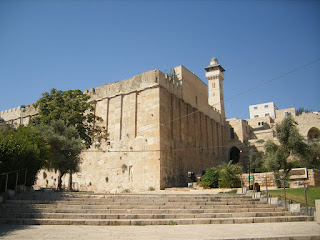A New Day for the Haft Sīn, 2013 An homage to “Nowruz,” the Iranian/Persian New Year
For over 3,000 years, during the vernal equinox holiday Nowruz - literally “The New Day” - families in Persia (now Iran) have traditionally set forth a table setting of seven symbolic items, each that start with the letter “Sh” in the Persian alphabet. Additional items are also included that represent essentials of our universe. This age-old custom, called Haft Sīn (pronounced “Haft Chin”), is here revisited by contemporary artist Eric Esmail Parnes in a signature interpretation relevant to our time:
1. Mirror (Sky)
In the installation’s nod to the past, the artist utilizes a mirror framed in an ornamental enamel of Persian design. The symbol of a mirror here plays a poignant note to its generally impartial but always contemporary grasp of the past and present, allowing a window into the times of our predecessors.
2. Apple (Earth)
Modern science has created such a radical revamping in the world of natural produce, that truly organic apples are rather scarce in urban society. The present state of food points to the direction of almost completely chemically reproduced doppelgangers. Thus, here giant apples - “bigger and better” - take the place of what once was; yet, these are now plastic.
3. Candles (Fire)
The candelabra is a merge of both the ancient and new; usually, candlesticks are used by families in the Haft-Sin. Here, a candelabra comes across as flamboyance (a word that originates from an Old French title for flame); in a way, it represents society’s fiery obsession with fame and celebrity.
4. Rose water (Water)
Rose water here is stored in Oriental reinterpretations of modern-day perfume vessels, including Gianni Versace as well as Jean Paul Gaultier’s iconic female body form.
5. Sabzeh Grass (Plants)
Plantation has been so influenced by capitalism in today’s world, some corporations have even ventured into trademarked seeds and genetically modified wheats. The artist has selected that the grass emerges from McDonald’s French Fries containers, in a reflection of the present-day condition of plantation at large.
6. Goldfish (Animals)
Goldfish are contained in retro stiletto heels, a radically different form of water vessel that pays homage to the creativity of the 1970’s that still resonates in the present.
7. Painted eggs (Humans)
Instead of regular hen eggs at the setting, we find a giant Ostrich bird’s egg covered in traditional gold leaf, a design often found in Persian and Middle Eastern ornamental visions.
8. Garlic (Medicine)
The garlic bulbs emerge here in an intense neon pink, which brings to mind modernity and contemporary life, akin to the flashing lights and colors of Times Square or other staples of our current mutual sense of popular value.
9. Books (Knowledge)
Usually represented by religious books or collections of poetry, the artist has installed books that - not seen to the viewer in its current foilage - are actually books of science and industry.
10. Hyacinth Flowers (Life and Beauty)
Life and beauty, represented traditionally by the Hyacinth, is here reconsidered in the concept of “beauty is in the eye of the beholder.” In the United States as well as worldwide, today’s values can often been seen in our appreciation of sports teams representing our states and countries; the passion is almost religious in its devotion. The flowers still emerge from baseball caps of the New York Yankees, one of the USA’s best-known teams.
11. Sumac (Sun)
The spice made from berries, symbolizes the color of the sun, encased in acrylic display boxes, as a contained modernist form.
The setting takes place, instead of on a traditional Persian carpet or rug, on an oversized Louis Vuitton placemat actually acquired by the artist in the Middle East.
In 2010, the International Day of Nowruz was recognized by the United Nations’ General Assembly as a cultural holiday of Persian origin.









Comments